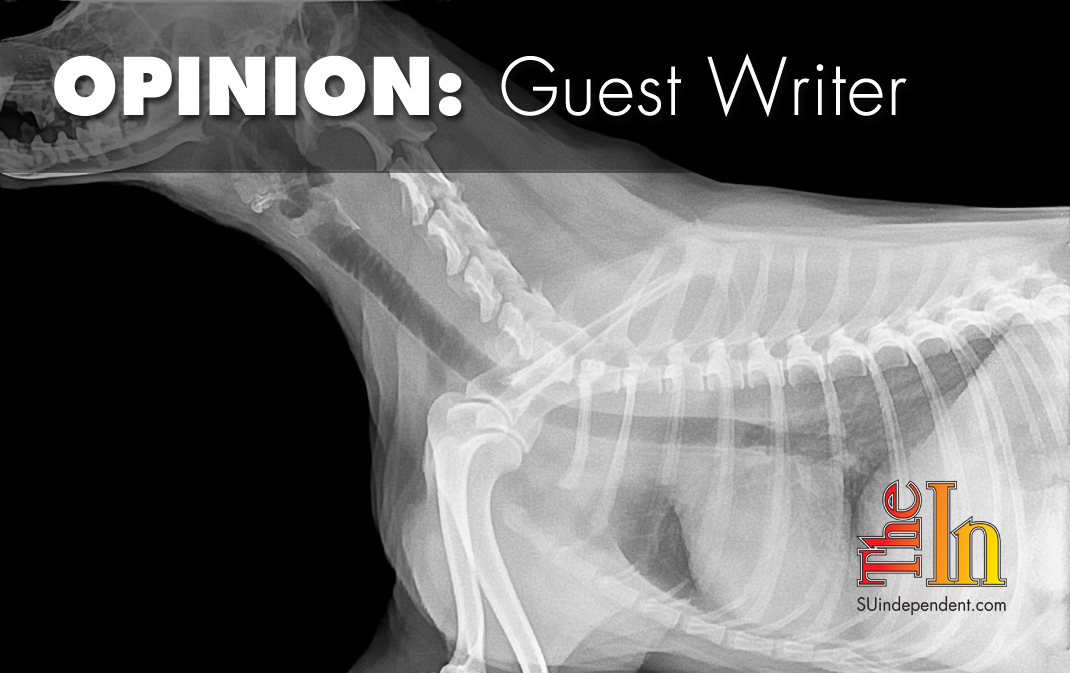
Animal research saves people and their pets from cancer
By Matthew Bailey
In October, James P. Allison and Tasuku Honjo won the Nobel Prize in medicine for their groundbreaking cancer research.
With the help of mice, they developed six revolutionary cancer treatments that target the immune system. Some patients who received just one round of therapy have survived for nearly two decades.
Without animal models, the research breakthroughs of Allison, Honjo, and countless other scientists would never have come to pass. Indeed, animal research drives medical progress for humans and animals alike.
Each year, about six million dogs and six million cats are diagnosed with cancer. Nearly half of dogs and one-third of cats over the age of 10 develop the disease. They are among the many beneficiaries of the path-breaking cancer research conducted by generations of scientists.
Consider the story of Emma, a 10-year-old Portuguese water dog diagnosed earlier last year with glioblastoma, an aggressive form of brain cancer that claimed former Sen. John McCain’s life.
Emma’s prognosis was bleak. So her owner decided to enroll her in a clinical trial at Virginia Tech. After six weeks of treatment, Emma’s tumor shrank dramatically, and her symptoms subsided. The program was so successful that the National Institute for Health has pledged more funding with the hope of expanding the clinical trial to humans.
Or take recent research on hemangiosarcoma, a form of cancer that damages canine blood vessels. Less than half of dogs live six months following diagnosis. But in 2017, veterinary researchers at the University of Minnesota conducted a trial in dogs that boosted six-month survival rates in the test group by more than 20 percentage points.
Since hemangiosarcoma in dogs is similar to angiosarcoma in humans, researchers may be able to use those findings to treat both species more effectively.
There’s new hope for dogs with bone cancer, too. A University of Pennsylvania trial of dogs with osteosarcoma found that an experimental therapy more than doubled the two-year survival rate for the condition. The treatment kept one research subject, an Old English sheepdog named Dexter, cancer free for five years.
Osteosarcoma in dogs closely mirrors a similar cancer in young children. So this research could hold promise for humans.
Researchers at the University of Illinois are testing a new treatment that could help cats with oral squamous cell carcinoma, a mouth cancer that kills many a couple of months after they’re diagnosed. The scientists are hopeful that their work will have applications in dogs and humans, too.
Despite the contributions of animals to medical science, many activists believe it’s time to shut down research in animal models. They claim that research techniques have progressed to a point where computer models and live cell cultures are adequate substitutes for animals.
But it’s nearly impossible to simulate how a treatment would work in an entire living organism. The biochemistry of living organisms is incredibly complex, and biological systems interact in a seemingly infinite number of ways. The computing power needed to replicate those processes just doesn’t exist. And even if it was feasible, scientists must first fully comprehend exactly what it is that they’re modeling.
There are also loads of similarities in DNA and organ structure across species. So an animal model can offer a holistic view of how a human — or another animal, for that matter — may respond to treatment.
We need to do everything we can to fight cancer. As multiple Nobel laureates have proven, animal research is crucial to that effort.
Matthew R. Bailey is president of the Foundation for Biomedical Research.
The viewpoints expressed above are those of the author and do not necessarily reflect those of The Independent.
How to submit an article, guest opinion piece, or letter to the editor to The Independent
Do you have something to say? Want your voice to be heard by thousands of readers? Send The Independent your letter to the editor or guest opinion piece. All submissions will be considered for publication by our editorial staff. If your letter or editorial is accepted, it will run on suindependent.com, and we’ll promote it through all of our social media channels. We may even decide to include it in our monthly print edition. Just follow our simple submission guidelines and make your voice heard:
—Submissions should be between 300 and 1,500 words.
—Submissions must be sent to editor@infowest.com as a .doc, .docx, .txt, or .rtf file.
—The subject line of the email containing your submission should read “Letter to the editor.”
—Attach your name to both the email and the document file (we don’t run anonymous letters).
—If you have a photo or image you’d like us to use and it’s in .jpg format, at least 1200 X 754 pixels large, and your intellectual property (you own the copyright), feel free to attach it as well, though we reserve the right to choose a different image.
—If you are on Twitter and would like a shout-out when your piece or letter is published, include that in your correspondence and we’ll give you a mention at the time of publication.
Articles related to “Animal research saves people and their pets from cancer”
Beauty is pain: Cosmetic animal testing and cruelty-free products



